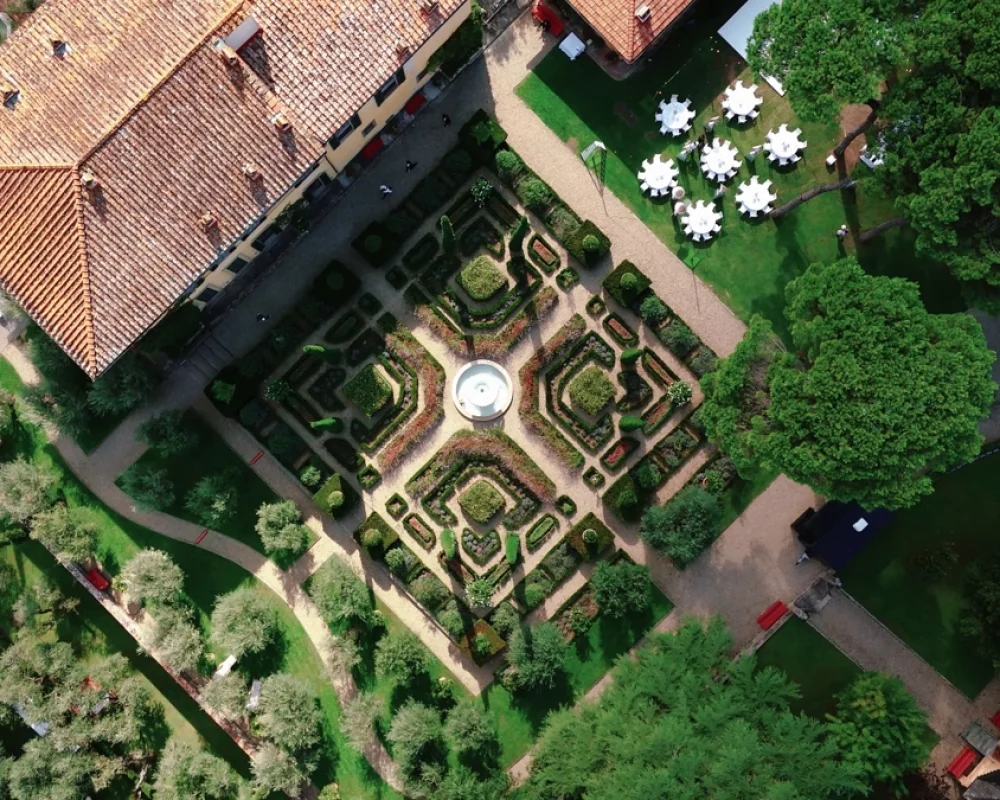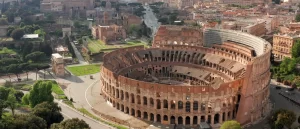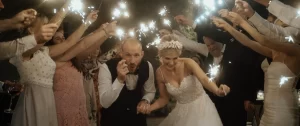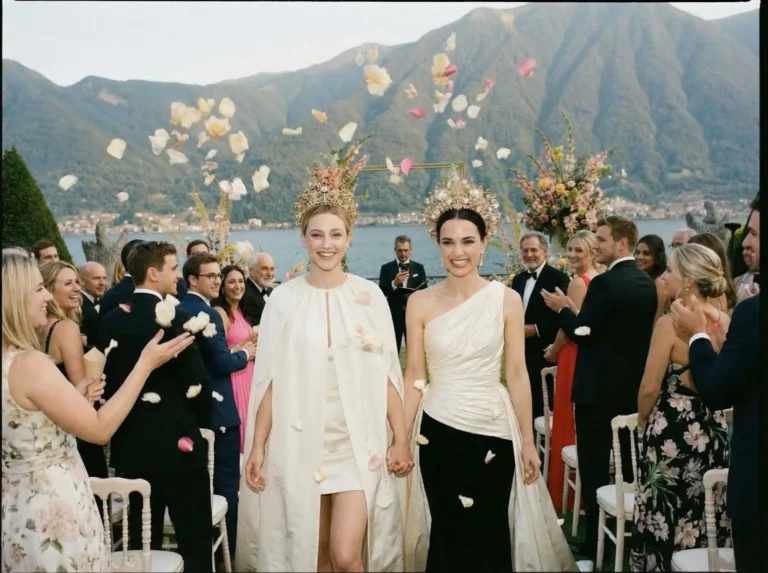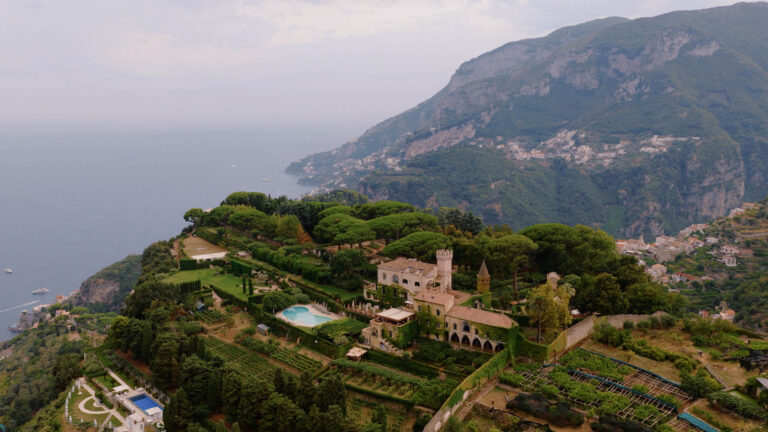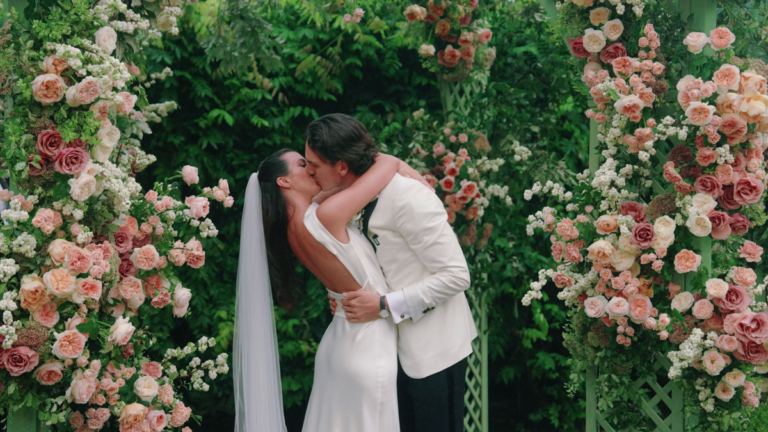Italy is one of the most beautiful countries in the world, universally known as the cradle of culture, art, and architecture. These aspects, combined with its renowned hospitality, breathtaking landscapes, and exquisite cuisine, are the main reasons why thousands of couples from all over the world choose it every year as the destination for their dream wedding. The Italian peninsula offers an endless variety of venues ready to host you: medieval castles, villages tucked away in forests or perched on cliffs, Renaissance villas… there truly is something for every taste. We can proudly say that we have visited many of them thanks to our work as wedding videographers.
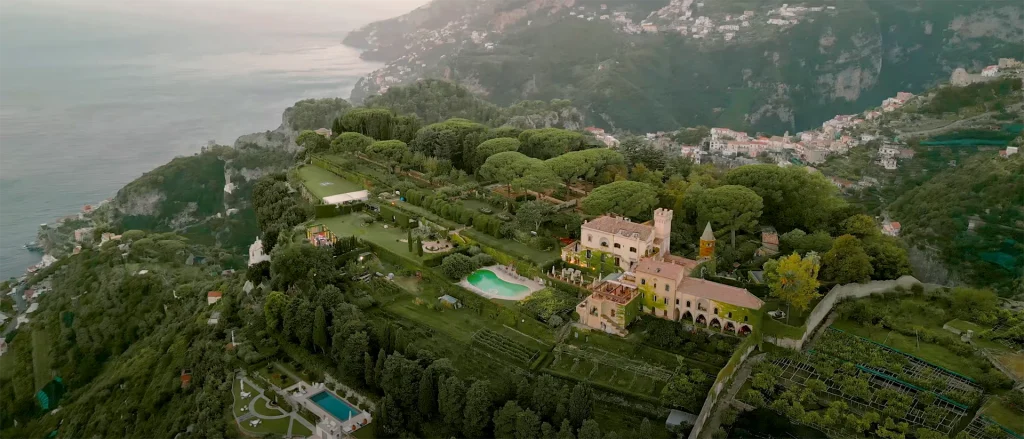
Most couples prefer large villas, both for logistical reasons and for style. In many of these, especially the most luxurious, you can find stunning gardens maintained with impeccable care, which often serve as the backdrop for the most important moment of the day: the wedding ceremony. Perhaps not everyone knows that these gardens have a specific name that identifies their style and are a uniquely Italian feature. They are called “Italian gardens,” and they are truly dreamlike spaces. These green areas are not just ordinary outdoor spaces but real masterpieces of design and landscape architecture, combining symmetry, geometry, and artistic details such as fountains, statues, and meticulously maintained pathways.

In this article, we will explore the main features of Italian gardens, their history, and why they are an ideal setting for a wedding in Italy. We will also see how these spaces can become perfect settings not only for the ceremony itself but also for unforgettable photography and videography, combining elegance and functionality.
Read also: Three Days of Love in Tuscany: Belmond Castello di Casole Wedding
Origins and History of Italian Gardens
Italian gardens have ancient origins and evolved over the centuries, reaching their definitive form during the Renaissance. Even in ancient Rome, horti represented spaces of pleasure and reflection, characterized by an orderly layout and architectural elements such as fountains and statues. This tradition was preserved and further developed over the following centuries, profoundly influencing the design of Italian gardens. In the 15th century, with the rise of the Renaissance, there was a renewed interest in the aesthetic and philosophical principles of classical antiquity.

Intellectuals such as Leon Battista Alberti, in his treatise De re aedificatoria, outlined the theoretical foundations for garden design, emphasizing harmony, symmetry, and the relationship between architecture and nature. These principles were realized in villas and gardens that became symbols of prestige and culture. The Medici villas in Tuscany, such as Villa di Castello and Villa di Pratolino, are emblematic examples of this evolution. Designed to reflect the power and refinement of the Medici family, these residences were surrounded by gardens that combined natural and artificial elements, particularly artistic features.

Axial layouts, terraces, and the presence of fountains and statues were intended to showcase the family’s wealth while creating a pleasant and relaxing atmosphere for leisurely strolls. During the 16th century, Italian gardens spread throughout Italy, from Florence to Rome, influencing the courts of Mantua, Ferrara, and Venice. These gardens were spaces for leisure but also, and more importantly, places where cultural, political, and social values were expressed. Their design needed to balance aesthetics and functionality, nature and art.

This tradition continued to evolve in the following centuries, influencing garden styles across Europe and leaving an indelible mark on Italy’s cultural landscape. Today, Italian gardens are not only a historical and artistic heritage but also an ideal setting for special events, such as weddings, where the beauty and harmony of the surroundings add unique value to the experience.
Main Features of Italian Gardens
Italian gardens are distinguished by their rigorous design and strong scenic component, reflecting the balance between nature and architecture typical of the Italian Renaissance. These gardens are characterized by a geometric arrangement of spaces, achieved through the use of precisely trimmed hedges, tree-lined avenues, and flowerbeds arranged in symmetrical patterns. A central feature of this layout is often a main axis that connects the villa or palace to the various sections of the garden, creating a sequence of spaces that gradually unfold for the visitor.
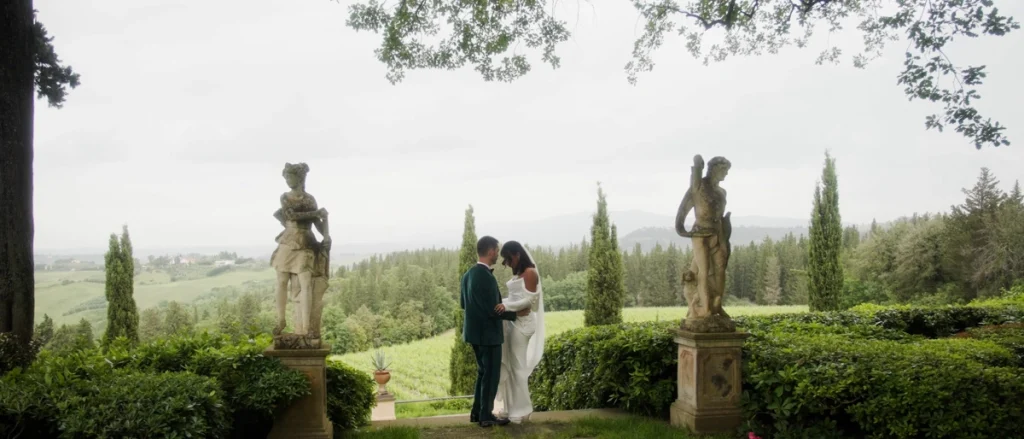
Another distinctive element is the use of water, which serves not only a decorative but also a symbolic purpose. Fountains, water features, and artificial ponds are designed to integrate harmoniously with the surroundings, creating reflections and plays of light that further enhance the garden’s opulence. The presence of water, often accompanied by statues and sculptures, gives the garden an atmosphere of serenity and grandeur.
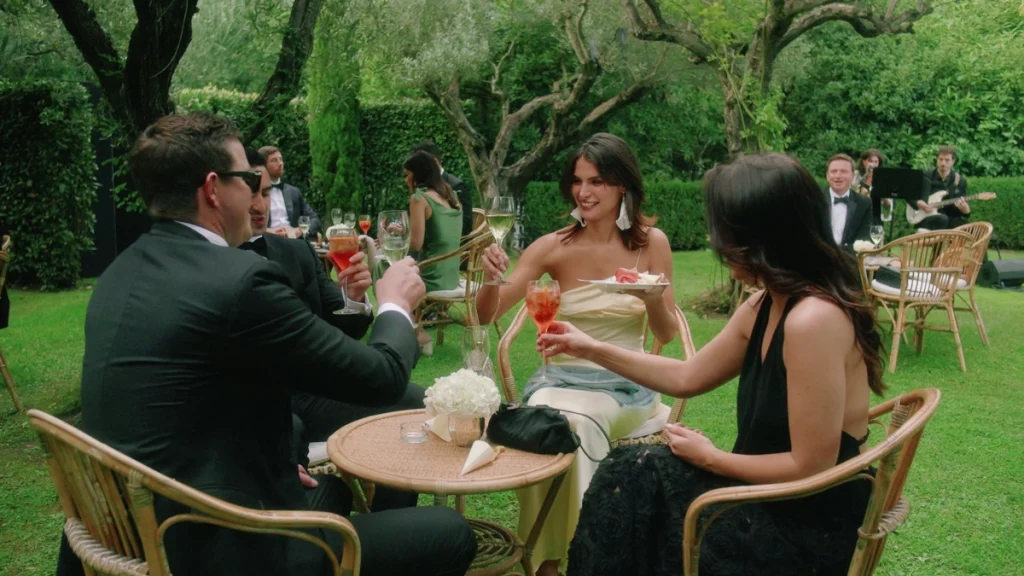
Architectural structures, such as pergolas, colonnades, and belvederes, are also fundamental elements of Italian gardens. They help define spaces, provide resting points, and create specific scenic or panoramic views that guide the visitor’s gaze. Pergolas, often covered with vines or wisteria, form shaded passages that offer respite on sunny days. Colonnades and belvederes, strategically placed, provide spectacular views of the garden and the surrounding landscape.
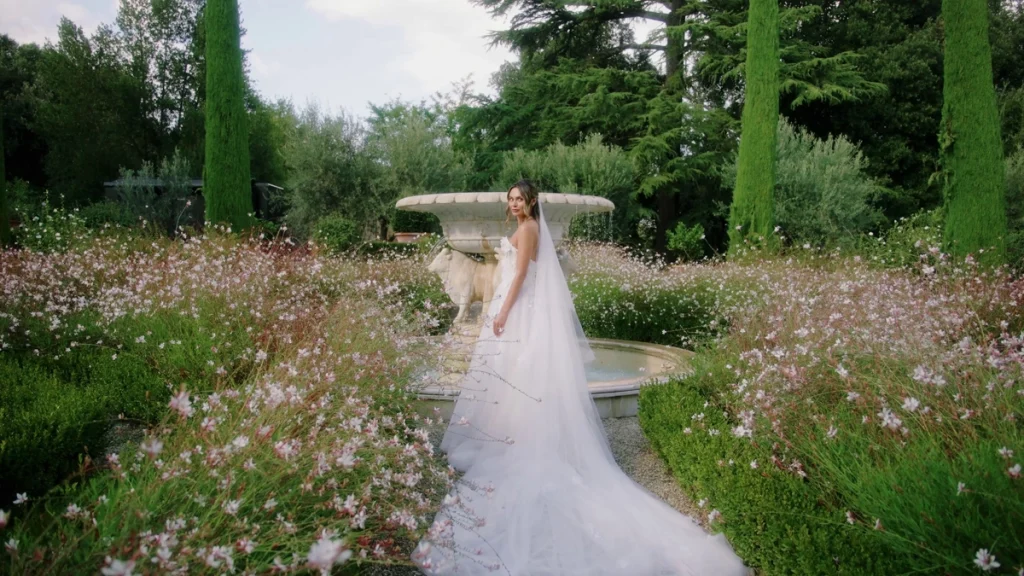
The vegetation in Italian gardens is carefully selected to reflect the order and symmetry of the design. Box hedges, cypress trees, and espaliered plants are primarily used to create geometric shapes and delineate spaces. Although the variety of plants is often limited, their meticulous arrangement and maintenance make the environment dynamic and visually stimulating.
The Most Famous Italian Gardens
Italy is home to some of the most celebrated and evocative Italian gardens in the world, true masterpieces of landscape architecture that attract thousands of visitors every year. Here are three emblematic examples:
Villa d’Este – Tivoli (Lazio). Declared a UNESCO World Heritage Site, Villa d’Este is one of the most extraordinary examples of a Renaissance Italian garden. Commissioned by Cardinal Ippolito II d’Este in 1550, the garden unfolds over terraces connected by symmetrical avenues, monumental fountains, cascades, and water features powered by an ingenious hydraulic system. The Fountain of the Organ, which produces music through water pressure, is one of its most famous marvels. The garden also offers panoramic views of the Roman countryside, making it a highly sought-after location for wedding ceremonies and photoshoots.
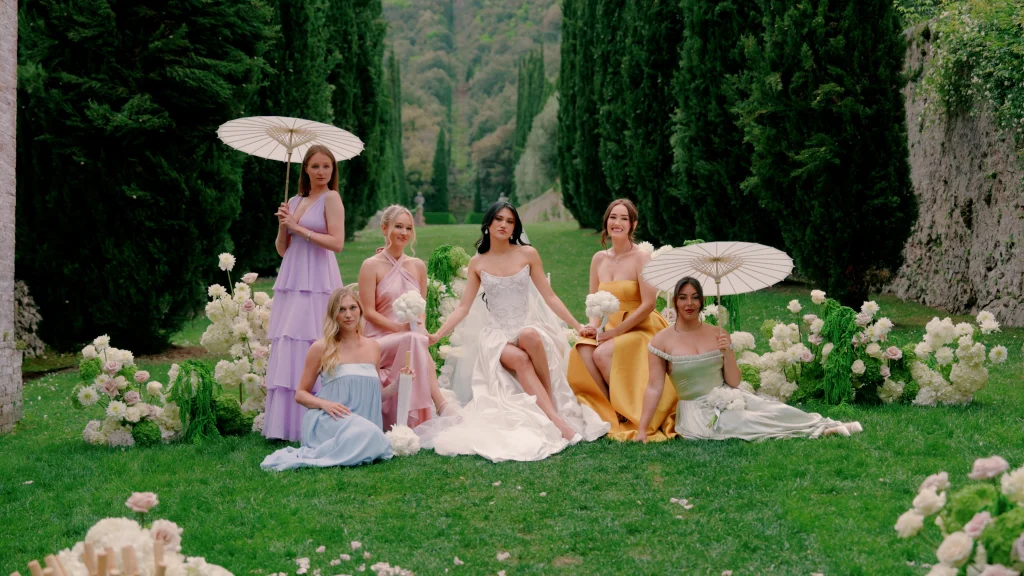
Boboli Gardens – Florence (Tuscany). Located behind Palazzo Pitti, the Boboli Gardens are among the most important and renowned examples of Italian gardens worldwide. Its history begins in 1549, when Eleonora di Toledo, wife of Cosimo I de’ Medici, acquired the palace and commissioned a garden worthy of the grand ducal residence. The garden spans approximately 45,000 m² and features a wide variety of architectural and sculptural elements, including fountains, grottoes, labyrinths, and ancient statues. The Buontalenti Grotto and the Kaffeehaus are among its most notable attractions.
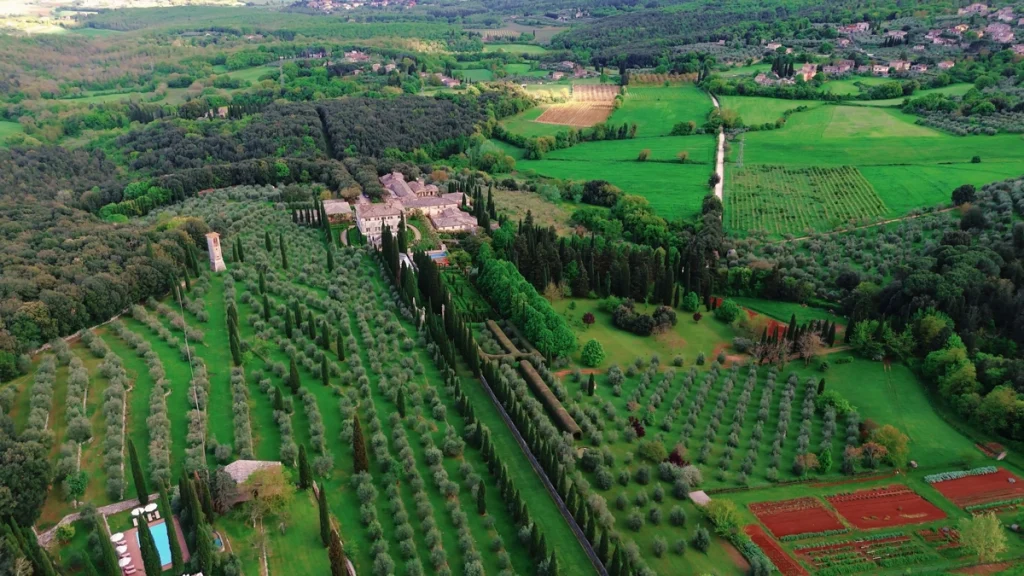
Villa Lante – Bagnaia (Lazio). Villa Lante is a masterpiece of the Italian garden, situated on a hillside and characterized by terraces, fountains, and water features. Commissioned by Cardinal Gianfrancesco Gambara in the 16th century, the villa is renowned for its perfect symmetry and skillful use of water. The garden was designed by architect Jacopo Barozzi da Vignola and represents one of the finest examples of Mannerist gardens. The layout of the spaces and the presence of scenic elements create an ideal environment for elegant ceremonies and visually striking video recordings.
Why Many Luxury Wedding Venues Feature an Italian Garden
Most luxury weddings in Italy take place in historic structures that have been recently restored, allowing distinguished guests to enjoy ancient charm while benefiting from all modern comforts. Gardens are a distinctive feature and a point of pride that many venues choose to preserve and highlight. Their presence is not merely an aesthetic choice; it also carries cultural, practical, and symbolic significance, making these spaces ideal for destination weddings.

First and foremost, Italian gardens offer a romantic and cinematic atmosphere unlike any other. Geometric perspectives, tree-lined avenues, fountains, and statues create a setting that resembles a natural movie set. This makes every celebration memorable: such a setting enhances not only the ceremony itself but also the overall experience for the guests. For a foreign couple choosing Italy as their wedding destination, a venue with this type of garden immediately embodies the elegance and refinement associated with “Made in Italy.”
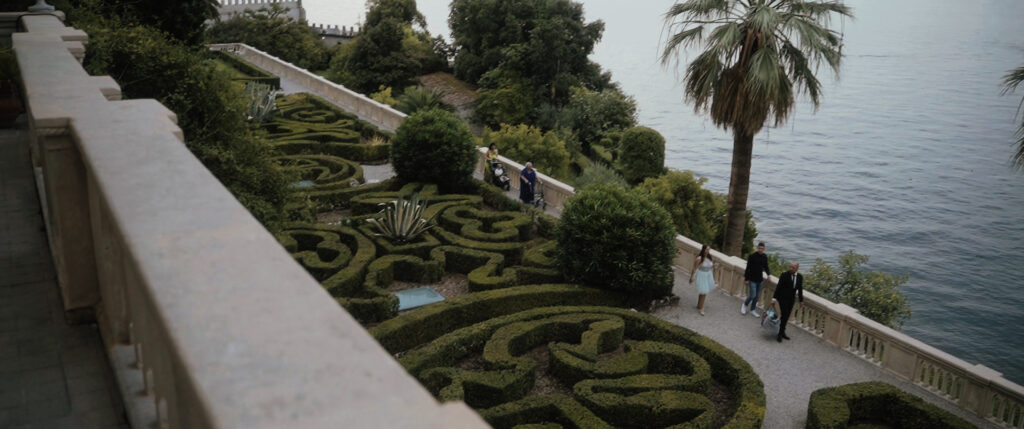
Secondly, Italian gardens provide a deep connection to the local territory and history. Many villas and historic residences, now transformed into luxury wedding venues, preserve the original gardens as an integral part of their architectural heritage. Choosing a venue with an Italian garden means immersing your celebration in an authentic context that reflects centuries of culture and landscape tradition.
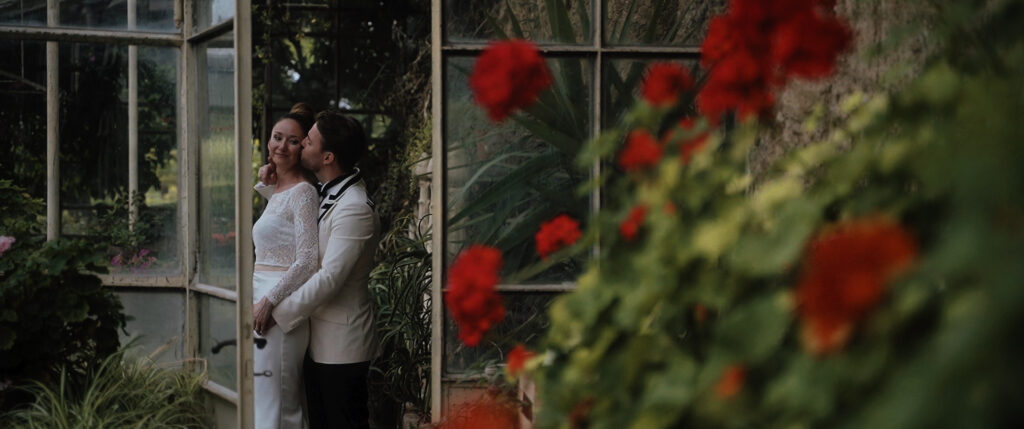
Finally, these gardens are highly functional for wedding planning. Their orderly layout and spacious design allow both the ceremony – whether civil or symbolic – and the reception to take place without the need for additional artificial setups. Guests can enjoy the event in an elegant and comfortable outdoor environment, while the couple can create an emotional journey that accompanies the day’s most important moments, from arrival to the final toast.
Read also: A Spectacular Wedding at Collegio alla Querce: Where Chinese Tradition Meets Italian Elegance
Ideal Decorations and Setups in Italian Gardens
Italian gardens already provide a perfect natural setting for elegant weddings, but their beauty can be further enhanced through carefully curated decorations and arrangements. The placement of flowers, lighting, choice of furniture, and drapery can transform these historic spaces into personalized settings that reflect the style and personality of the couple. Imagine placing, at the end of a perfectly symmetrical and richly decorated avenue, a beautiful floral canopy under which to exchange your vows and say your most important “I do!”
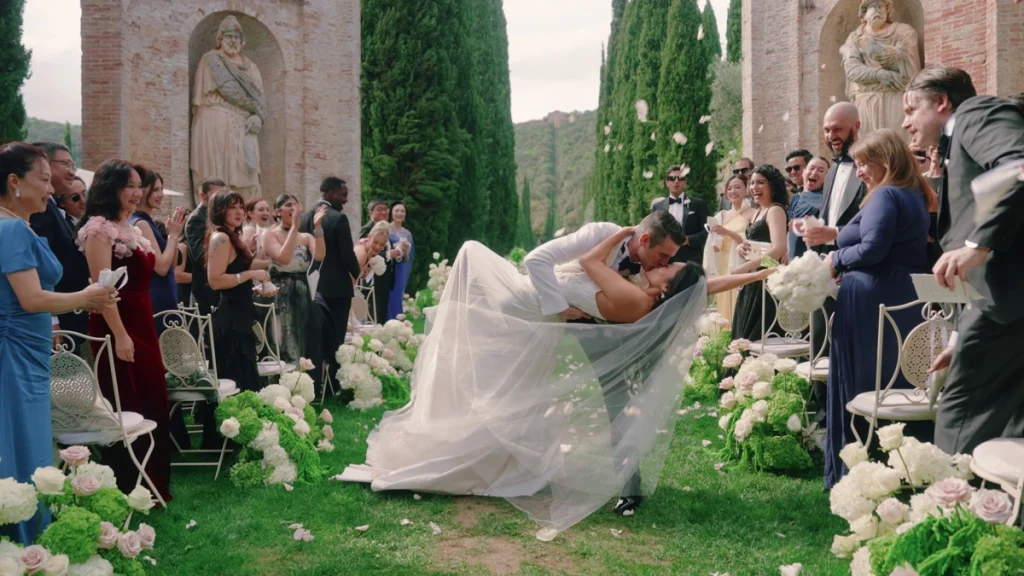
Italy is home to luxury florists of international caliber, specializing in refined and scenic compositions that integrate harmoniously with the garden’s architecture and vegetation. From elegant centerpieces to floral structures for the altar, these professionals create a striking visual impact, ensuring that every corner of the garden becomes a standout element for photography and videography.
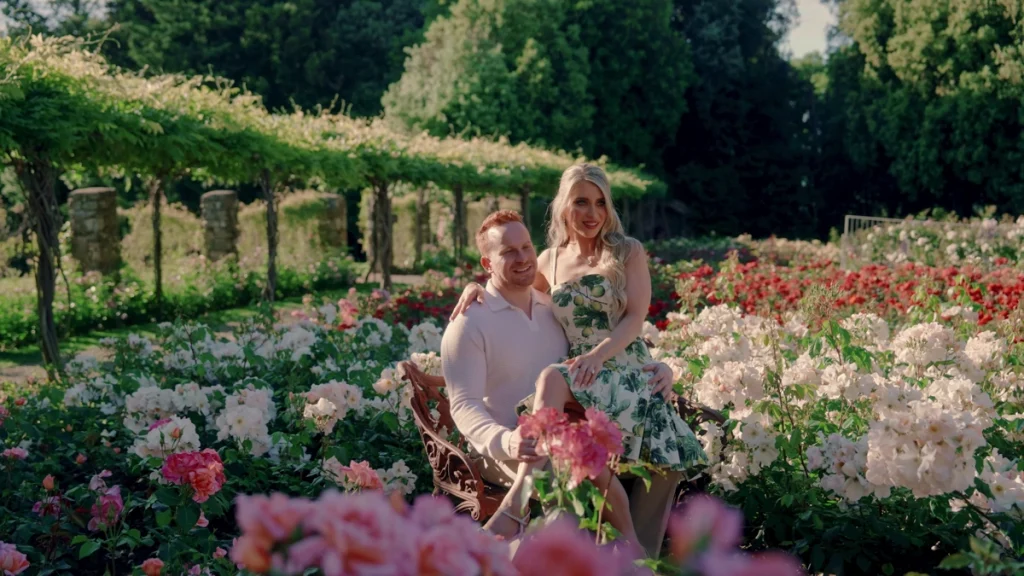
To get the best out of your wedding and coordinate every detail, including the work of the florists, the importance of hiring a wedding planner should not be underestimated. Organizing a wedding in Italy, especially in a historic venue, requires coordination between the location, florists, catering providers, and entertainment professionals, as well as compliance with any historical restrictions or local regulations. An experienced wedding planner can orchestrate all these elements, ensuring that each phase of the event runs smoothly and that the final result is harmonious, elegant, and memorable.
Wedding Videography in Italian Gardens
If you have decided to get married in Italy and have already chosen your beautiful venue, the next important step is selecting the professionals who will preserve the memories of your most important day through photography or videography. In many cases, the ceremonies take place directly in the gardens of the venues, as they are the most rich and evocative areas, perfectly suited to accommodate both the couple and their guests. The settings they offer are ideal for wedding video and photography, thanks to the combination of symmetry, natural perspectives, and architectural details.
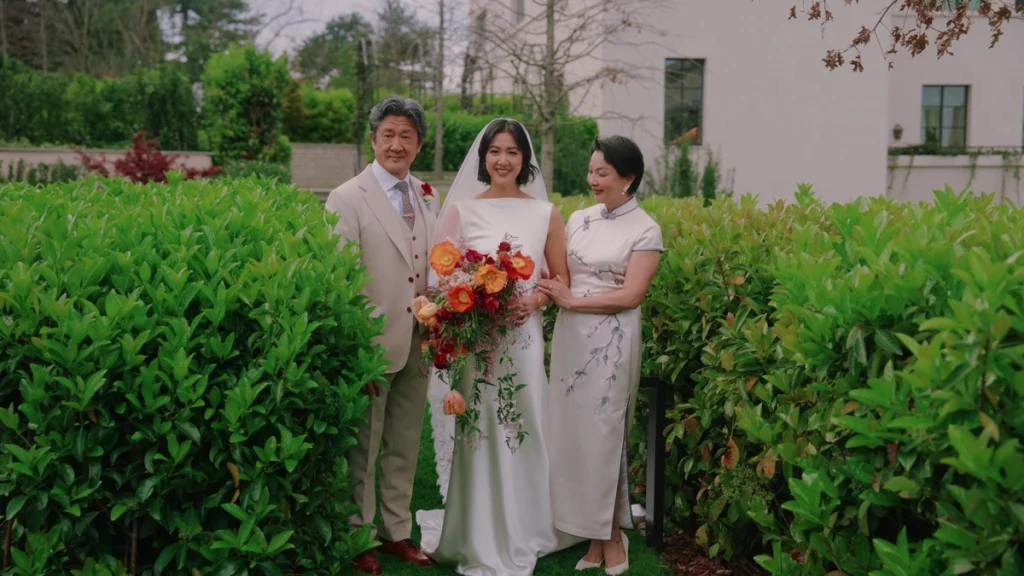
The geometric layout of the pathways, fountains, statues, and pergolas creates perfect focal points for filming, allowing the videographer to capture elegant and dynamic images from multiple angles. Every element of the garden can become part of the visual narrative, transforming the wedding video into a story that blends art, nature, and history. Natural light filtering through trees and hedges adds depth and softness to the images, making intimate moments, such as the exchange of vows or the first look, particularly striking. Additionally, the orderly structure of the garden allows for smooth camera movements and sequences without disrupting the flow of the ceremony or the guests.
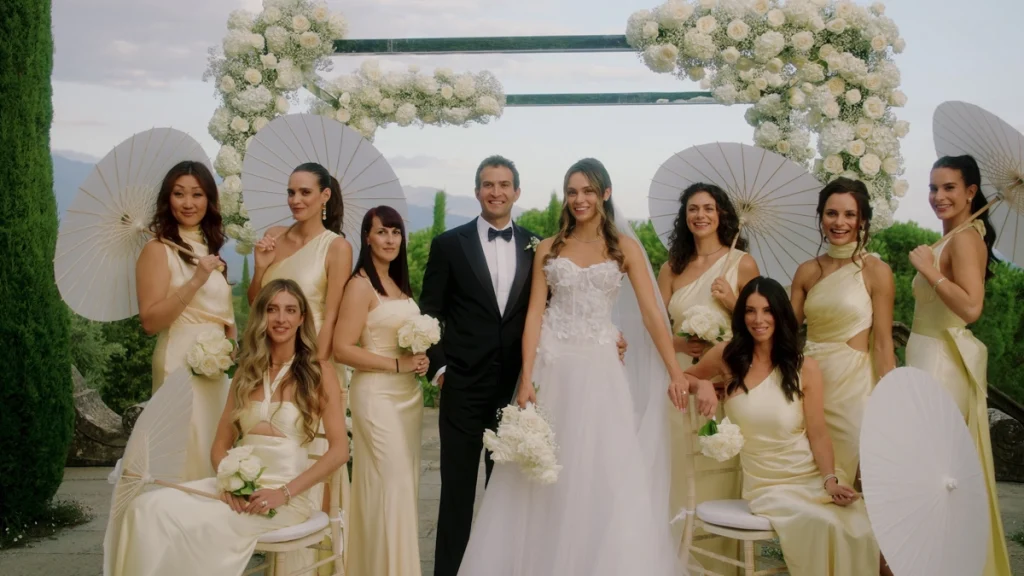
The presence of historic and scenic details – such as panoramic terraces, monumental fountains, and tree-lined pathways – offers videographers numerous creative opportunities for cinematic shots, drone footage, and emotional sequences. Beyond the ceremony, gardens are also ideal locations for couple photoshoots. Often, we like to capture drone footage while the couple strolls alone through these green labyrinths, as it conveys a profound sense of intimacy and connection between the couple and nature.
Read also: Super 8 Wedding Videography in Italy: The Vintage Film Trend Every Couple Loves
Destination Weddings in Italy
In recent years, Italy has established itself as one of the most sought-after destinations in the world for international weddings. Its uniqueness lies in the perfect combination of history, art, nature, and lifestyle, elements that together create an unforgettable experience for the couple and their guests. Some couples choose Italy for their destination wedding primarily because of its stunning landscapes, but our Bel Paese offers much more: getting married here is not just about finding a picturesque location, but immersing yourself in a culture that has made beauty and hospitality its defining traits.
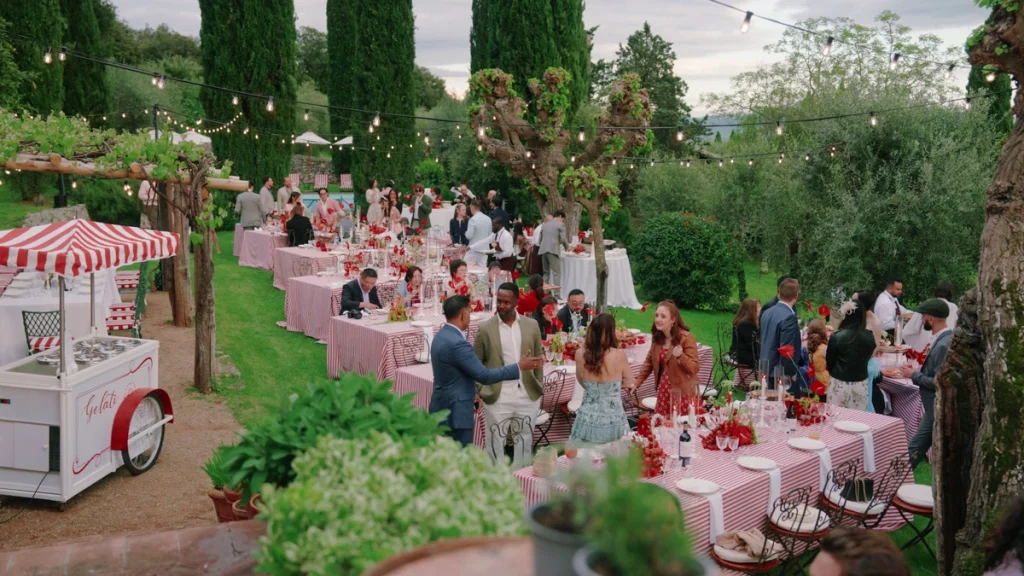
One of the main reasons many foreign couples choose Italy is its extraordinary variety of landscapes and architecture, as well as its mild and favorable climate for most of the year. Within a single country, it is possible to move from the gentle hills of Tuscany, with its Renaissance villas and romantic vineyards, to the breathtaking views of Lake Como, where elegant historic estates overlooking the water create luxurious and sophisticated atmospheres. Equally iconic is the Amalfi Coast, with its cliffside gardens, colorful villages, and natural vistas that are perfect for scenic and refined weddings.

In addition to these locations, Italy offers numerous art cities such as Florence, Venice, and Rome, timeless destinations where a wedding can be celebrated surrounded by architectural masterpieces and an incomparable cultural context. Each Italian region has its own identity, cuisine, and style of hospitality, making every wedding unique and unforgettable. Choosing Italy as a wedding destination means giving yourself and your guests an experience that goes beyond the ceremony: a true journey filled with flavors, landscapes, and atmospheres that will remain etched in memory forever, beautifully captured in the video of your wedding day.
Practical Tips for Getting Married in Italy
Choosing Italy as a wedding destination requires attention to several practical aspects, especially for couples coming from abroad. First and foremost, it is important to consider the season: spring and summer months, from April to September, offer the best weather conditions for outdoor ceremonies and optimal video shooting, while autumn can provide warm, scenic colors, albeit with a higher risk of rain. Another crucial element is checking the permits and regulations of the venue. Many historic gardens and private villas are subject to architectural and environmental restrictions that govern the use of decorations, fireworks, music, or drones.

Planning ahead helps avoid issues and ensures a smooth wedding while respecting local rules. The choice of the venue itself requires careful evaluation: factors such as garden capacity, ease of access, the presence of covered areas in case of bad weather, and the availability of additional services like catering, restrooms, and parking should all be considered. Many luxury wedding venues offer comprehensive packages that include décor, coordination with local vendors, and logistical support, making the planning process simpler and more secure.

Finally, relying on local professionals such as experienced wedding planners and videographers is essential. A wedding planner can guide you in selecting the most suitable venue, coordinating vendors, managing timelines, and handling unexpected issues, while a local videographer knows the best angles, natural lighting, and scenic details of the garden, ensuring a flawless final result. With careful planning and the support of skilled professionals, getting married in Italy becomes an elegant, safe, and stress-free experience, capable of transforming the wedding into an unforgettable event for both the couple and their guests.


